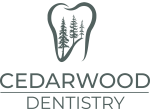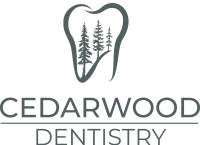Patients with missing teeth have three general categories of replacement options: implants, tooth-borne fixed, and removable. All three replacement options are good, but there may be benefits to one solution over another in certain situations.
Dental Implants
Implants are a great way to replace single teeth. However, while some advertisements or late-night commercials will make patients believe that implants will solve their tooth issues, they are not perfect. They are an excellent solution for missing teeth but can suffer from bone loss and become unstable if poorly placed or restored.
The most significant benefit of implants is that they do not affect the teeth around the open space. An implant is placed in the bone independent of the teeth next to it. As a result, implants can be made to look very natural. Implants, however, can be expensive, and the placement and restoration of an implant is a process that can take multiple months. Implants also do not move with orthodontics, so patients who have malpositioned teeth should have them moved before their implant is placed.
Tooth-Borne Fixed Replacements
Tooth-borne fixed replacements of missing teeth are any restoration that uses the teeth around the space to suspend a fake tooth, called a pontic. The two primary replacements in this category would be a traditional bridge and a resin-bonded wing bridge. The resin bonded wing bridge benefits from metal wings off of the pontic bonded to teeth that have been minimally prepared. A traditional bridge suspends the pontic using two restorations that fully cover the teeth next to the space. If both teeth next to the bridge could benefit from crowns (full coverage restorations), a bridge may be a better non-removable solution for a missing tooth than an implant. If the teeth next to the missing space do not have extensive restorations, a wing bridge can still be made to fill this space. Wing bridges, however, suffer from debonding of the cement and have a shorter documented life span than traditional bridges or implants.
Removable Restorations
Removable restorations like dentures or partials can benefit patients who need multiple teeth replaced at once. They are usually the least expensive option to replace a tooth or teeth. However, dentures and partials may take many appointments to complete and may have a more extended adjustment period than implants or bridges. People who use partial dentures are also more likely to suffer from tooth decay of their remaining teeth due to the many places that food can get trapped. In addition, patients must remove both dentures and partials for at least eight hours a day to allow their tissue to breathe and to prevent fungal infections.
If you would like to discuss options for your missing teeth, please call our office or request an appointment here! At Cedarwood Dentistry, we are committed to providing you with all of the facts so that you can make informed decisions about your care.


